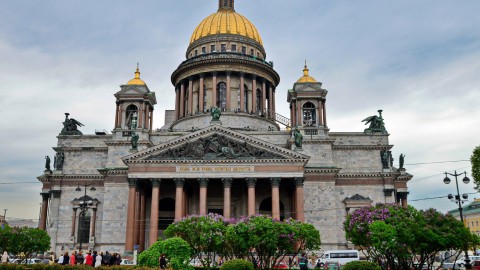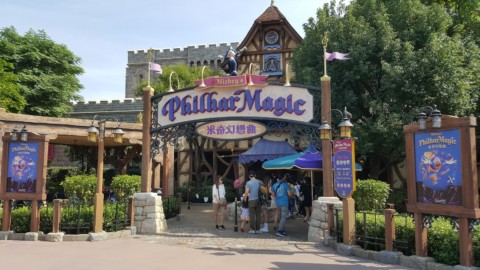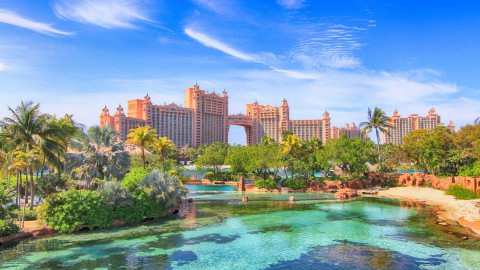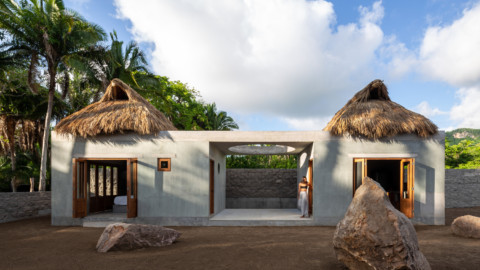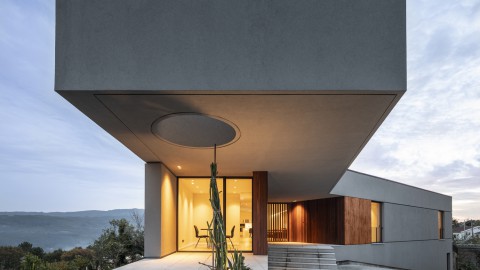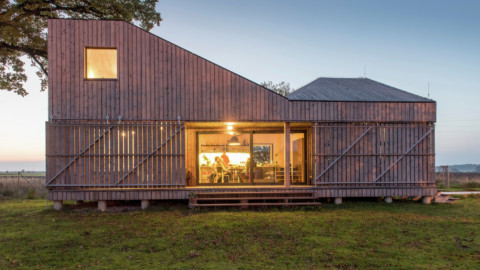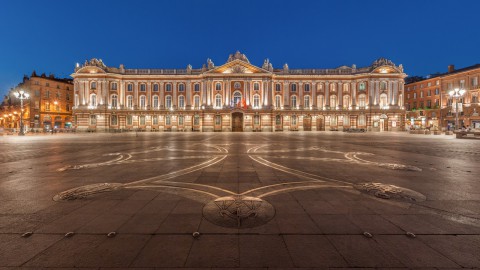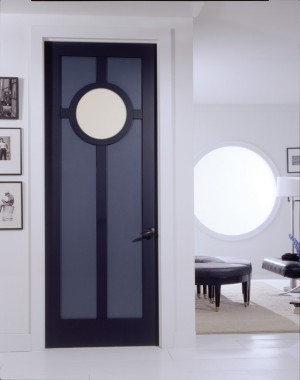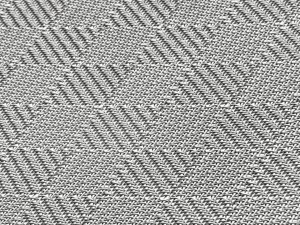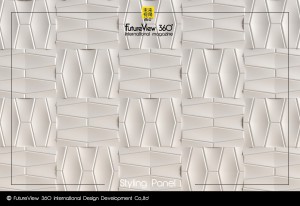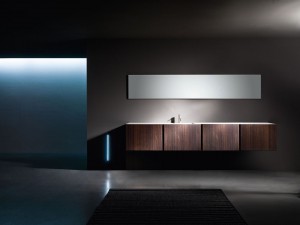Casa Milà 米拉之家

Casa Milà (Catalan pronunciation: [ˈkazə miˈla], Spanish pronunciation: [ˈkasa miˈla]), popularly known as La Pedrera (pronounced [ɫə pəˈðɾeɾə]) or “The stone quarry”, a reference to its unconventional rough-hewn appearance, is a modernist building in Barcelona, Catalonia, Spain. It was the last private residence designed by architect Antoni Gaudí and was built between 1906 and 1912.
The building was commissioned in 1906 by Pere Milà and his wife Roser Segimon . At the time, it was controversial because of its undulating stone facade, twisting wrought iron balconies and designed by Josep Maria Jujol. Several structural innovations include a self-supporting stone façade, and a free-plan floor, underground garage and the spectacular terrace on the roof.
In 1984, it was declared a World Heritage Site by UNESCO. From 2013 is the headquarters of the Fundació Catalunya La Pedrera which manages the visit to the building,exhibitions and other cultural and educative activities at Casa Milà.
CasaMilà(加泰羅尼亞語發音:[kazəmila],西班牙語發音:[kasa mila]),俗稱La Pedrera(發音為[ɫəpəðɾeɾə])或“The stone quarry”,是對其非常規粗獷外觀的提及,在巴塞羅那,加泰羅尼亞,西班牙的現代主義建築。這是建築師安東尼高迪設計的最後一座私人住宅,建於1906年至1912年間。
該建築於1906年由PereMilà和他的妻子Roser Segimon委任。當時,由於其起伏的石頭外牆,扭曲的鍛鐵陽台,由Josep Maria Jujol設計,因此引起爭議。幾個結構創新包括自立石材外觀,自由平面地板,地下車庫和屋頂上壯觀的露台。
1984年,它被聯合國教科文組織宣佈為世界遺產。從2013年起,FundacióCatalunyaLa Pedrera的總部負責管理CasaMilà的建築,展覽和其他文化和教育活動。
Address:92, Passeig de Gràcia
Town or city:Barcelona, Catalonia
Country:Spain
地址:92,PasseigdeGràcia
城鎮:巴塞羅那,加泰羅尼亞
國家:西班牙
Building owners
Casa Milà was built for Roser Segimón and her husband Pere Milà. Roser Segimon was the wealthy widow of Josep Guardiola, an Indiano or Americano, or former colonist returned from South America, had made his fortune with a coffee plantation in Guatemala. Her second husband, Pere Milà was a developer known for his flamboyant lifestyle.
業主
CasaMilà是為RoserSegimón和她的丈夫PereMilà而建。 Roser Segimon是Josep Guardiola的富有寡婦,一位印第安人或美國人,或從南美洲歸來的前殖民者,在危地馬拉的咖啡種植園賺了大錢。 她的第二任丈夫PereMilà是一位以其華麗的生活方式而聞名的開發商。
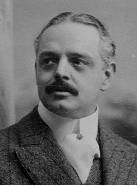

Construction process
In 1905, Milà and Segimón married and on June 9, Roser Segimón bought a house with garden which occupied an area of 1,835 square meters, located on Paseo de Gracia, 92. In September, they commissioned Gaudí for building them a new house with the idea of living in the main floor and renting out the rest of the apartments. On February 2, 1906, the project was presented to the Barcelona City Council and the works began, demolishing the pre-existing building instead of reforming it, as in the case of the Casa Batlló.
The building was completed in December 1910 and the owner asked Gaudí to make a certificate to inhabit the main floor, which the City Council authorized in October 1911, and the couple moved in. On October 31, 1912, Gaudí issued the certificate stating that, in accordance with his plans and his direction, the work had been completed and the whole house was ready to be rented.
施工過程
1905年,Milà和Segimón結婚,6月9日,RoserSegimón買了一間帶花園的房子,面積為1,835平方米,位於Paseo de Gracia,92。9月,他們委託高迪建造一座新房子。 住在主樓並租用其他公寓的想法。 1906年2月2日,該項目被提交給巴塞羅那市議會,工程開始,拆除原有的建築,而不是改造它,就像CasaBatlló一樣。
該建築於1910年12月完工,業主要求高迪在1911年10月市議會授權的主樓進行居住證明。這對夫婦搬進來。1912年10月31日,高迪頒發證書,說明, 根據他的計劃和方向,工作已經完成,整個房子已準備好租用。

Catholic symbols
Gaudí, a Catholic and a devotee of the Virgin Mary, planned for the Casa Milà to be a spiritual symbol.Overt religious elements include an excerpt from the Rosary on the cornice and planned statues of Mary, specifically Our Lady of the Rosary, and two archangels, St. Michael and St. Gabriel.
However, the Casa Milà was not built entirely to Gaudí’s specifications. The local government ordered the demolition of elements that exceeded the height standard for the city, and fined the Milàs for many infractions of building codes. After Semana Trágica, an outbreak of anticlericalism in the city, Milà prudently decided to forgo the religious statues. Gaudí contemplated abandoning the project but a priest persuaded him to continue.
天主教的象徵
高迪,一位天主教徒和聖母瑪利亞的奉獻者,計劃將米拉之家作為一種精神像徵。其他宗教元素包括頌歌玫瑰花的節选和瑪麗的計劃雕像,特別是聖母玫瑰經,以及兩個 大天使,聖邁克爾和聖加布里埃爾。
然而,CasaMilà並非完全按照高迪的規格建造。 當地政府下令拆除超出城市高度標準的元素,並對Milàs因違反建築規範的許多違法行為處以罰款。 在SemanaTrágica,城市中出現了反叛主義之後,Milà謹慎地決定放棄宗教雕像。 高迪考慮放棄這個項目,但一位牧師說服他繼續下去。
Tiānzhǔjiào de xiàngzhēng
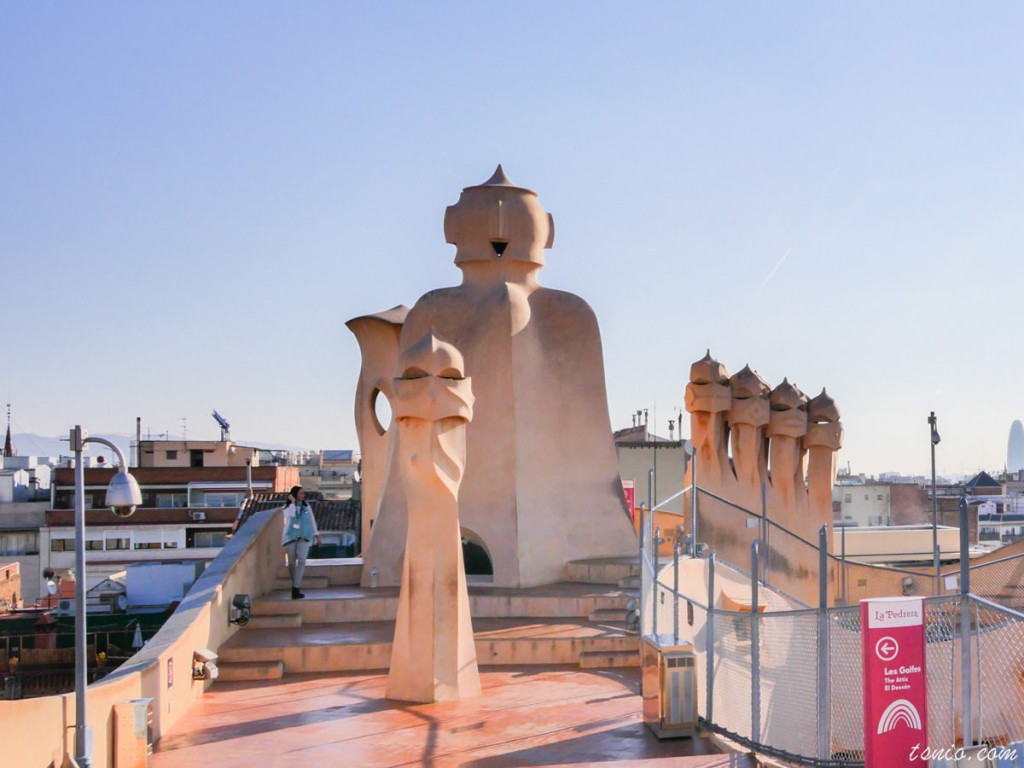
Design
The building is 1,323 m2 per floor on a plot of 1,620 m2. Gaudí made the first sketches in his workshop in the Sagrada Família. He designed the house as a constant curve, both outside and inside, incorporating ruled geometry and naturalistic elements.
Casa Milà consists of two buildings, which are structured around two courtyards that provide light to the nine storeys: basement, ground floor, mezzanine, main (or noble) floor, four upper floors, and an attic. The basement was intended to be the garage, the main floor the residence of the Milàs (a flat of all 1,323 m2), and the rest distributed over 20 apartments. The resulting layout is shaped like an asymmetrical “8” because of the different shapes and sizes of the courtyards. The attic housed the laundry and drying areas, forming an insulating space for the building and simultaneously determining the levels of the roof.
One of the most notable elements of the building is the roof, crowned with skylights, staircase exits, fans, and chimneys. All of these elements, constructed out of brick covered with lime, broken marble, or glass have a specific architectural function but are also real sculptures integrated into the building.
The apartments feature plastered ceilings with dynamic reliefs, handcrafted wooden doors, windows, and furniture, as well as hydraulic tiles and various ornamental elements.
The stairways were intended as service entries, with the main access to the apartments by elevator except for the noble floor, where Gaudí added a prominent interior staircase. Gaudí wanted the people who lived in the flats to all know each other. Therefore, there were only elevators on every other floor, so people on different floors would meet one another.
設計
該建築面積為1,323平方米,佔地1,620平方米。高迪在他的聖家堂(SagradaFamília)的工作室裡製作了第一批草圖。他將房屋設計成一個恆定的曲線,包括內部和內部,包括規則幾何和自然元素。
CasaMilà酒店由兩棟建築組成,分別圍繞兩個庭院,為九層樓提供照明:地下室,底層,夾層樓,主樓(或貴族樓),四層樓和閣樓。地下室的目的是作為車庫,主樓是Milàs的住宅(面積為1,323平方米),其餘的分佈在20多套公寓內。由於庭院的形狀和大小不同,最終的佈局形狀像不對稱的“8”。閣樓安置了洗衣區和乾燥區,為建築物形成了隔熱空間,同時確定了屋頂的高度。
該建築最引人注目的元素之一是屋頂,頂部有天窗,樓梯出口,風扇和煙囪。所有這些元素都是用石灰,破碎的大理石或玻璃磚砌成的,具有特定的建築功能,但也是與建築融為一體的真實雕塑。
公寓設有帶動態浮雕的灰泥天花板,手工製作的木門,窗戶和家具,以及液壓瓷磚和各種裝飾元素。
樓梯是作為服務入口,除了高貴的地板之外,主要通過電梯進入公寓,高迪增加了一個突出的內部樓梯。高迪希望生活在公寓裡的人都能互相認識。因此,每隔一層只有電梯,所以不同樓層的人會互相見面。
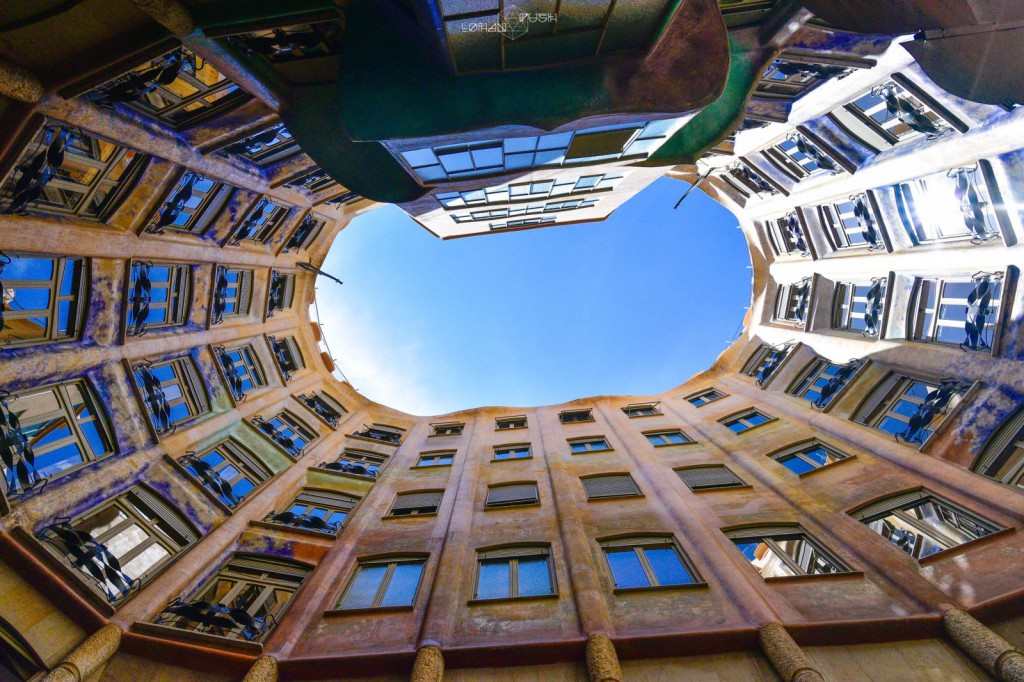
Structure
Casa Milà is characterized by its self-supporting stone facade, meaning that it is free of load-bearing walls. The facade connects to the internal structure of each floor by means of curved iron beams surrounding the perimeter of each floor. This construction system allows, on one hand, large openings in the facade which give light to the homes, and on the other, free structuring of the different levels, so that internal walls can be added and demolished without affecting the stability of the building. This allows the owners to change their minds at will and to modify, without problems, the interior layout of the homes.
結構體
CasaMilà的特點是其自立石材外立面,這意味著它沒有承重牆。 立面通過圍繞每個樓層周邊的彎曲鐵樑連接到每個樓層的內部結構。 這種結構系統一方面允許立面上的大開口為家庭提供光線,另一方面允許不同層次的自由結構,從而可以添加和拆除內牆而不影響建築物的穩定性。 這允許業主隨意改變他們的想法並且毫無問題地修改房屋的內部佈局。
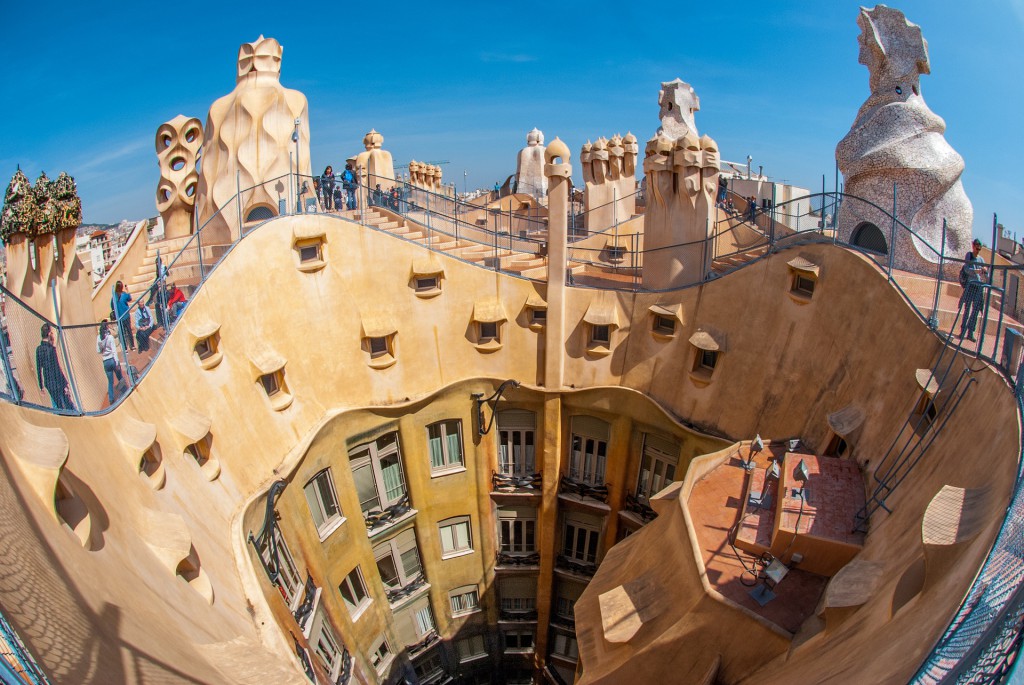
Constructive and decorative items
Facade
The facade is composed of large blocks of limestone from the Garraf Massif on the first floor and from the Villefranche quarry for the higher levels. The blocks were cut to follow the plot of the projection of the model, then raised to their location and adjusted to align in a continuous curve to the pieces around them.
Viewed from the outside the building has three parts: the main body of the six-storey blocks with winding stone floors, two floors set a block back with a different curve, similar to waves, a smoother texture and whiter color, and with small holes that look like embrasures, and finally the body of the roof.
Gaudí’s original facade had some of its lower-level ironwork removed. In 1928, the tailor Mosella opened the first store in La Pedrera, and he eliminated the bars. This did not concern anyone, because in the middle of twentieth century, wrought ironwork had little importance. The ironwork was lost until a few years later, when Americans donated one of them to the MoMa, where it is on display.
With restoration initiatives launched in 1987, the facade was rejoined to some pieces of stone that had fallen. In order to respect the fidelity of the original, material was obtained from the Villefranche quarry, even though by then it was no longer operating.
建築和裝飾物品
正面
外立面由一樓Garraf Massif的大塊石灰岩和較高層的Villefranche採石場組成。切割塊以遵循模型投影的圖,然後升高到它們的位置並調整以連續曲線對準它們周圍的碎片。
從外面看,建築有三個部分:六層樓的主體,有蜿蜒的石頭地板,兩個樓層設置一個後面有不同曲線的塊,類似於波浪,更光滑的紋理和更白的顏色,以及小孔那個看起來像是塞子,最後是屋頂的身體。
高迪的原始立面拆除了一些較低級別的鐵製品。 1928年,裁縫Mosella在La Pedrera開設了第一家店鋪,並取消了酒吧。這與任何人都沒有關係,因為在二十世紀中葉,鐵藝工作並不重要。幾年之後,當美國人將其中一件捐贈給展出的MoMa時,鐵製品就丟失了。
隨著1987年啟動的修復計劃,立面重新加入了一些已經倒下的石頭。為了尊重原件的保真度,材料是從Villefranche採石場獲得的,儘管那時已經不再使用了。
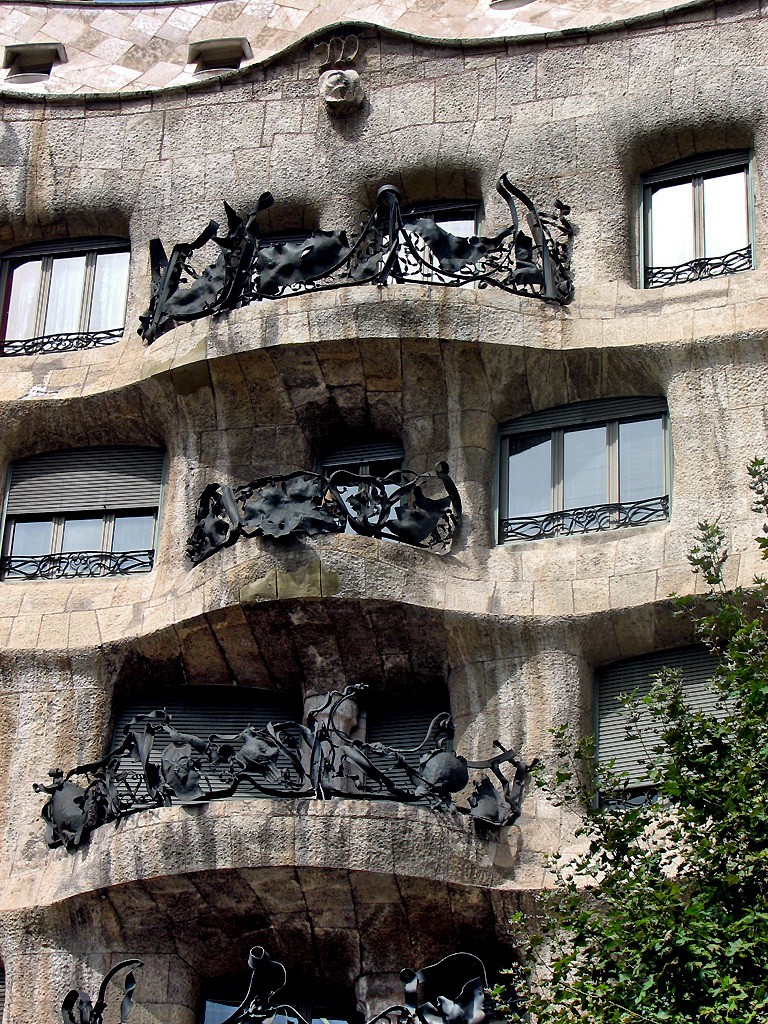
Hall and courtyards
The building uses a completely original solution to solve the issue of a lobby being too closed and dark. Its open and airy courtyards provide a place of transit and are directly visible to those accessing the building. There are two patios on the side of the Passeig de Gracia and of the street Provence.
大廳和庭院
該建築使用完全原創的解決方案來解決大廳太封閉和黑暗的問題。 其開放通風的庭院提供了一個交通工具,並且可以直接看到進入大樓的人。 Passeig de Gracia大道和普羅旺斯街道兩側設有兩個庭院。
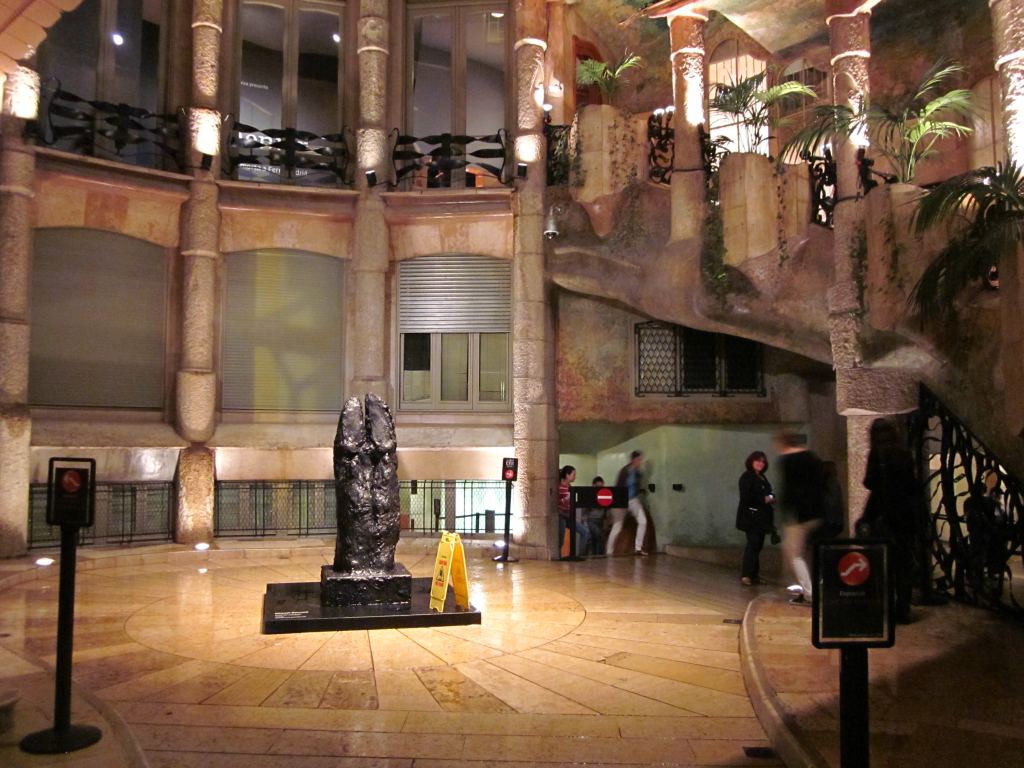
Patios
Patios, structurally, are key as supporting loads of interior facades. The floor of the courtyard is supported by pillars of cast iron. In the courtyard, there are traditional elliptical beams and girders but Gaudí applied an ingenious solution of using two concentric cylindrical beams with stretched radial beams, like the spokes of a bicycle. They form a point outside of the beam to two points above and below, making the function of the central girder a keystone and working in tension and compression simultaneously. This supported structure is twelve feet in diameter and is considered “the soul of the building” with a clear resemblance to Gothic crypts. The centerpiece was built in a shipyard by Josep Maria Carandell who copied a steering wheel, interpreting Gaudí’s intent as to represent the helm of the ship of life.
庭院
在結構上,露台是支撐內部立面的關鍵。 庭院的地板由鑄鐵支柱支撐。 在庭院裡,有傳統的橢圓形樑和大樑,但是高迪採用了一種巧妙的解決方案,即使用兩根同心圓柱樑和拉伸的徑向梁,就像自行車的輻條一樣。 它們在梁外部形成一個點到上方和下方的兩個點,使中央樑的功能成為一個基石並同時在拉伸和壓縮中工作。 這種支撐結構的直徑為12英尺,被認為是“建築的靈魂”,與哥特式隱窩明顯相似。 該中心裝置由Josep Maria Carandell在造船廠建造,他復制了一個方向盤,解釋了高迪的意圖,以代表生命之船的掌舵。

Interior, gates
Access is protected by a massive iron gate with a design attributed to Jujol. It was originally used by both people and cars, as access to the garage is in the basement, now an auditorium.
The two halls are fully polychrome with oil paintings on the plaster surfaces, with eclectic references to mythology and flowers.
During construction there was a problem including a basement as a garage for cars, the new invention that was thrilling the bourgeois at the time. The future neighbor Felix Anthony Meadows, owner of Industrial Linera, requested a change because his Rolls Royce could not access it. Gaudí agreed to remove a pillar on the ramp that led into the garage so that Felix, who was establishing sales and factory in Walls of Valles, could go to both places with his car from La Pedrera.
For the floors of Casa Milà, Gaudí used a model of floor forms of square timbers with two colors, and the hydraulic pavement hexagonal pieces of blue and sea motifs that had originally been designed for the Batllo house. The wax was designed in gray by John Bertrand under the supervision of Gaudí who “touched up with their own fingers,” in the words of the manufacturer Josep Bay.
室內,大門
入口受到巨大鐵門的保護,其設計歸功於Jujol。它最初由人和車使用,因為車庫的入口位於地下室,現在是禮堂。
兩個大廳是完全多彩的,石膏表面上有油畫,不拘一格地提到神話和鮮花。
在施工期間出現了一個問題,包括地下室作為汽車車庫,這個新發明當時令資產階級感到震驚。未來的鄰居Felix Anthony Meadows,工業Linera的所有者,要求改變,因為他的勞斯萊斯無法訪問它。高迪同意拆除通往車庫的斜坡上的一根柱子,以便在Valles的Walls建立銷售和工廠的Felix可以用他的車從La Pedrera到這兩個地方。
對於米拉之家的地板,高迪使用了兩種顏色的方形木地板模型,以及最初為Batllo房屋設計的藍色和海洋圖案的液壓路面六角形件。在製造商何塞普灣(Josep Bay)的話中,約翰·伯特蘭(John Bertrand)在高迪(Gaudí)的監督下,用自己的手指“用自己的手指撫摸著”,將蠟設計為灰色。

Loft
Like in Casa Batlló, Gaudí shows the application of the catenary arch as a support structure for the roof, a form which he had already used shortly after graduating in the wood frameworks of Mataró’s cooperative known as “L’Obrera Mataronense.” In this case, Gaudí used the Catalan technique of timbrel, imported from Italy in the fourteenth century.
The attic, where the laundry rooms were located, was a clear room under a Catalan vault roof supported by 270 parabolic vaults of different heights and spaced by about 80 cm. The roof resembles both the ribs of a huge animal and a palm, giving the roof-deck a very unconventional shape similar to a landscape of hills and valleys. The shape and location of the courtyards makes the arches higher when the space is narrowed and lower when the space expands.
The builder Bayó explained its construction: “First the face of a wide wall was filled with mortar and plastered. Then Canaleta indicated the opening of each arch and Bayó put a nail at each starting point of the arch at the top of the wall. From these nails was dangled a chain so that the lowest point coincided with the deflection of the arch. Then the profile displayed on the wall by the chain was drawn and on this profile the carpenter marked and placed the corresponding centering, and the timbrel vault was started with three rows of plane bricks. Gaudí wanted to add a longitudinal axis of bricks connecting all vaults at their keystones”.
閣樓
就像在巴特羅之家一樣,高迪展示了懸鏈拱的應用作為屋頂的支撐結構,這是他在Mataró合作社稱為“L’Obrera Mataronense”的木框架中畢業後不久就已經使用過的一種形式。在這種情況下,高迪使用了十四世紀從意大利進口的加泰羅尼亞語timbrel技術。
洗衣房所在的閣樓是一個透明的房間,位於加泰羅尼亞拱頂下,由270個不同高度的拋物面拱頂支撐,間隔約80厘米。屋頂類似於巨大的動物和手掌的肋骨,使屋頂甲板具有非常規的形狀,類似於丘陵和山谷的景觀。庭院的形狀和位置使得拱門在空間變窄時更高,在空間擴展時更低。
建築師Bayó解釋了它的結構:“首先,寬壁的表面充滿了砂漿和抹灰。然後Canaleta表示每個拱門的開口,Bayó在牆頂的拱門的每個起點都釘了一個釘子。這些釘子懸掛在鍊子上,使最低點與拱門的偏轉相吻合。然後繪製鏈條在牆壁上顯示的輪廓,在這個輪廓上,木匠標記並放置相應的中心,並且啟動了timbrel金庫有三排平面磚。高迪希望在它們的基石上添加連接所有拱頂的磚縱軸“。

Roof and chimneys
The work of Gaudí on the rooftop of La Pedrera brought his experience at Palau Güell together with solutions that were clearly more innovative – this time creating shapes and volumes with more body, more prominence, and less polychromasia.
On the rooftop there are six skylights/staircase exits (four of which were covered with broken pottery and some that ended in a double cross typical of Gaudí), twenty-eight chimneys in several groupings, two half-hidden vents whose function is to renew the air in the building, and four domes that discharged to the facade. The staircases also house the water tanks; some of which are snail-shaped.
The stepped roof of La Pedrera, called “the garden of warriors” by the poet Pere Gimferrer because the chimneys appear to be protecting the skylights, has undergone a radical restoration, removing chimneys added in interventions after Gaudí, television antennas, and other elements that degraded the space. The restoration brought back the splendor to the chimneys and the skylights that were covered with fragments of marble and broken Valencia tiles. One of the chimneys was topped with glass pieces – it was said that Gaudí did that the day after the inauguration of the building, taking advantage of the empty bottles from the party. It was restored with the bases of champagne bottles from the early twentieth century. The repair work has enabled the restoration of the original impact of the overhangs made of stone from Ulldecona with fragments of tiles. This whole set is more colorful than the facade, although here the creamy tones are dominant.
屋頂和煙囪
Gaudí在La Pedrera屋頂上的工作帶來了他在PalauGüell的經驗以及明顯更具創新性的解決方案 – 這次創造出更多的身體,更突出和更少的多色染色的形狀和體積。
在屋頂上有六個天窗/樓梯出口(其中四個用破碎的陶器覆蓋,一些以高迪典型的雙十字架結束),兩組八個煙囪,兩個半隱藏的通風口,其功能是更新建築物內的空氣,以及四個排放到立面的圓頂。樓梯也容納水箱;其中一些是蝸牛狀的。
由於菸囪似乎在保護天窗,La Pedrera的階梯式屋頂被稱為“戰士花園”,因為煙囪似乎正在保護天窗,經過了徹底的修復,去除了高迪,電視天線和其他元素之後乾預的煙囪。降低了空間。修復工程將輝煌帶回煙囪和天窗,這些天窗覆蓋著大理石碎片和破碎的瓦倫西亞瓷磚。其中一個煙囪頂部裝有玻璃碎片 – 據說高迪在建築物落成後的第二天就這樣做了,利用了聚會上的空瓶子。它使用二十世紀初的香檳酒瓶基地進行了修復。修復工作使得Ulldecona的石頭懸垂物的原始衝擊能夠恢復到瓷磚碎片。整個裝置比立面更加豐富多彩,雖然這裡的奶油色調占主導地位。
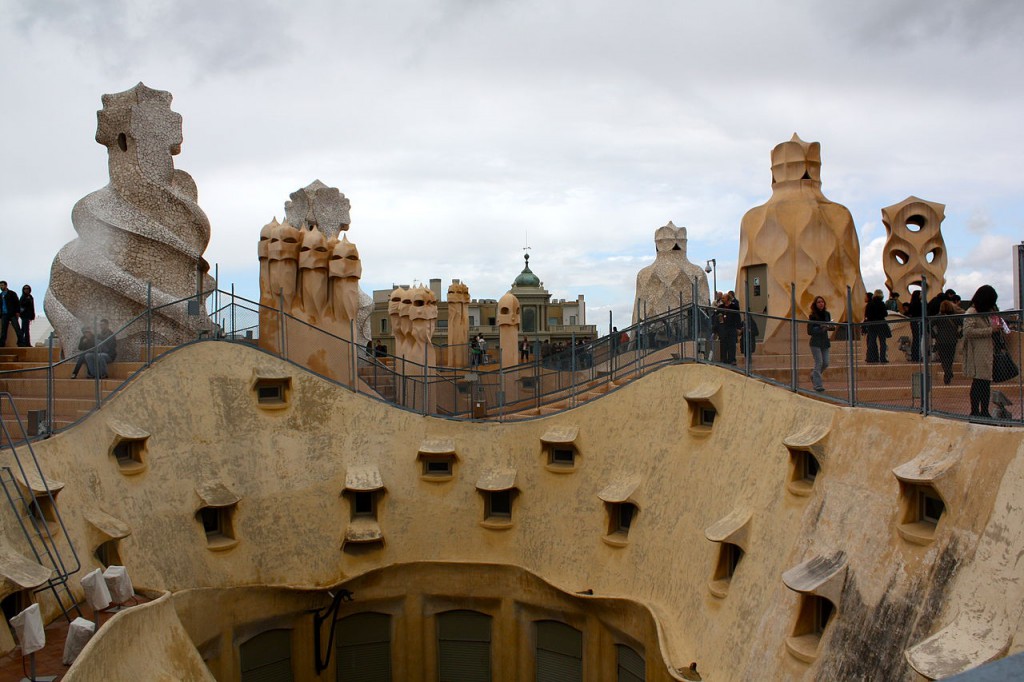
Architecture
he 1921 Einstein Tower in Potsdam, designed by Erich Mendelsohn
Solomon R. Guggenheim Museum in Manhattan, New York, designed by Frank Lloyd Wright
Chapelle Notre Dame du Haut, Ronchamp, France, designed by Le Corbusier
The Hundertwasserhaus and other works by Austrian architect Friedensreich Hundertwasser
Disney Concert Hall in Los Angeles, by Frank Gehry
Free exhibitions often are held on the first floor, which also provides some opportunity to see the interior design. There is a charge for entrance to the apartment on the fourth floor and the roof. The other floors are not open to visitors.
建築
他1921年在波茨坦的愛因斯坦塔,由Erich Mendelsohn設計
紐約曼哈頓所羅門·R·古根海姆博物館,由弗蘭克·勞埃德·賴特設計
Chapelle Notre Dame du Haut,法國Ronchamp,由Le Corbusier設計
Hundertwasserhaus和奧地利建築師Friedensreich Hundertwasser的其他作品
弗蘭克蓋里的洛杉磯迪士尼音樂廳
一樓經常舉辦免費展覽,這也為觀看室內設計提供了一些機會。 四樓和屋頂的入口處收費。 其他樓層不對遊
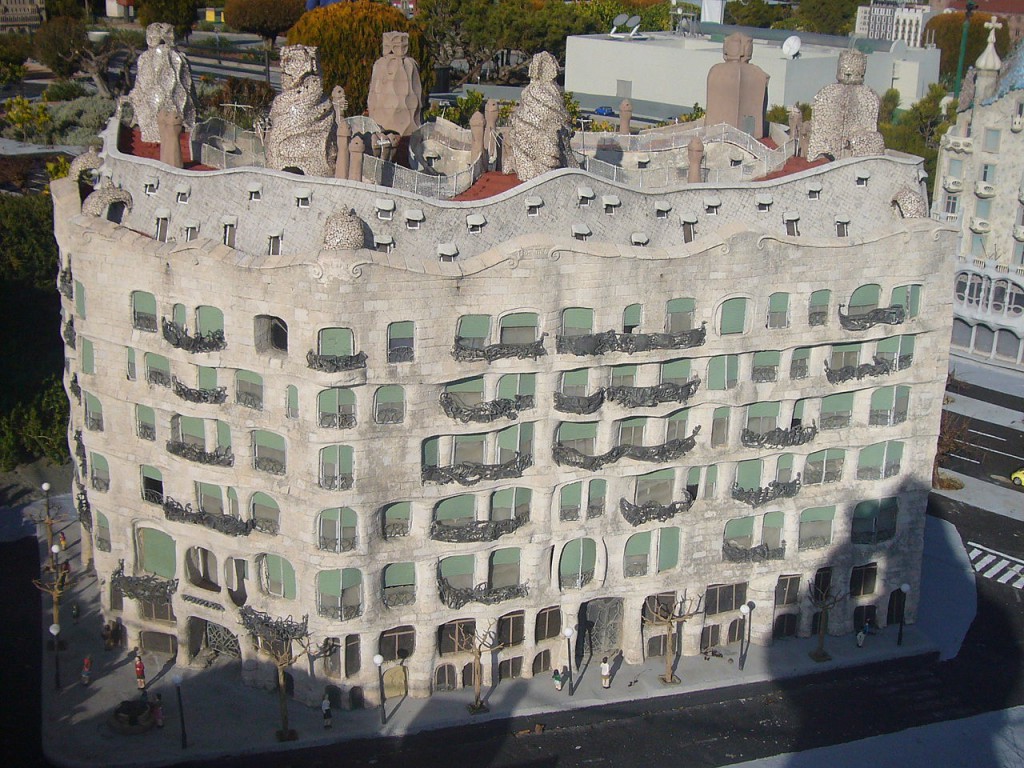
FROM:◄ Casa Milà, Barcelona [HD] ►
FROM:Casa Milà, la Pedrera, Antoni Gaudí, Barcelona – BCNDJI – DJI Phantom 2 Vision + footage
Don’t you think it’s addictive?
Want to know more about the beauty of architecture?
Come and join our members to explore the beauty of architectural design.
覺得看得不過癮嗎?
想要知道更多建築之美嗎?
快來加入我們的會員,一同探索建築設計之美。
The above article is purely for appreciation and sharing purposes, as well as the construction of new technology and the public can be in-depth understanding of the information at the same time there are sources, will be able to query, no use of the document as a commercial transaction, if illegal, please inform the We will immediately remove the site, thank you for cooperation.
以上文章純粹作為欣賞及分享用途,以及將建築新型技術傳遞給與大眾能夠深入了解,同時資料還有來源,將可查詢,絕無使用該文件資料作為商業交易行為,如有違法請務必告知該網站我們將立即處理撤除,謝謝合作。


